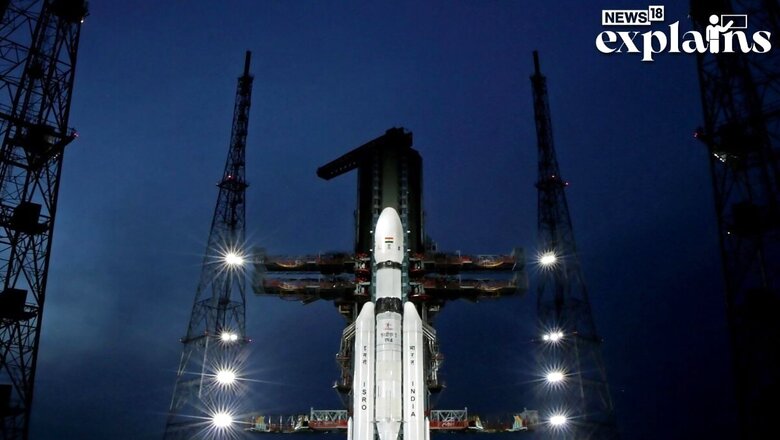
views
Weeks after India launched Chandrayaan-3 Russia also began its first probe to the moon in almost 50 years. However, Luna-25 The Luna-25 spacecraft crashed into the Moon after it spun into an uncontrolled orbit, Russia’s Roscosmos space agency said on August 20.
Chandrayaan’s lander, Vikram, and the rover, Pragyaan, will land on the moon on August 23. Meanwhile, major powers including the United States and China are also racing to discover more about the elements held on the earth’s only natural satellite. NASA has spoken about a “lunar gold rush” and explored the potential of moon mining.
Why are major powers so interested in what is up there?
THE MOON
The moon, which is 3,84,400 km from our planet, moderates the earth’s wobble on its axis which ensures a more stable climate. It also causes tides in the world’s oceans.
Current thinking is that it was formed when a massive thing collided with earth about 4.5 billion years ago. The debris from the collision came together to form the moon.
Chandrayaan-3 Mission: Orbit circularisation phase commencesPrecise maneuvre performed today has achieved a near-circular orbit of 150 km x 177 km
The next operation is planned for August 16, 2023, around 0830 Hrs. IST pic.twitter.com/LlU6oCcOOb
— ISRO (@isro) August 14, 2023
Temperatures vary: in full Sun, they rise to 127 degrees Celsius while in darkness they plummet to about minus 173 degrees Celsius. The moon’s exosphere does not give protection against radiation from the Sun.
WATER
The first definitive discovery of water on the moon was made in 2008 by Chandrayaan-1, which detected hydroxyl molecules spread across the lunar surface and concentrated at the poles, according to NASA.
Water is crucial for human life and also can be a source of hydrogen and oxygen – and these can be used for rocket fuel.
HELIUM-3
Helium-3 is an isotope of helium that is rare on earth, but NASA says there are estimates of a million tonnes of it on the moon.
This isotope could provide nuclear energy in a fusion reactor but since it is not radioactive it would not produce dangerous waste, according to the European Space Agency.
RARE EARTH METALS
Rare earth metals – used in smartphones, computers and advanced technologies – are present on the moon, including scandium, yttrium and the 15 lanthanides, according to Boeing.
HOW WOULD MOON MINING WORK?
It is not yet clear how will the mining work, but some sort of infrastructure would have to be established on the moon. The conditions of the moon mean robots would have to do most of the hard work, though water on the moon would allow for long-term human presence.
WHAT DOES THE LAW SAY?
According to the United Nations 1966 Outer Space Treaty, no nation can claim sovereignty over the moon, or other celestial bodies, and that the exploration of space should be carried out for the benefit of all countries.
But lawyers say it is unclear whether or not a private entity could claim sovereignty over a part of the moon. “Space mining is subject to relatively little existing policy or governance, despite these potentially high stakes,” The RAND Corporation said in a blog last year.
The 1979 The Moon Agreement states that no part of the moon “shall become property of any State, international intergovernmental or non-governmental organization, national organization or non-governmental entity or of any natural person.”
It has not been ratified by any major space power. The United States in 2020 announced the Artemis Accords, named after NASA’s Artemis moon program, to seek to build on existing international space law by establishing “safety zones” on the moon. Russia and China have not joined the accords.
What Does Chandrayaan-3 Aim to Achieve?
Chandrayaan-3 is a follow-up mission to Chandrayaan-2 that will attempt safe and soft landing on the lunar surface. This mission aims to showcase India’s technical capabilities in achieving a precise landing on the Moon.
The lunar craft will deploy a rover on the lunar surface to demonstrate its ability to rove and explore the Moon. The rover will collect data on the composition and geology of the moon, which will help scientists learn more about the history and evolution of the satellite.
Chandrayaan-3 will also be the first mission to land on the lunar South Pole. This region is of special interest due to its permanently shadowed areas, where the presence of water ice is anticipated.
(With inputs from Reuters)




















Comments
0 comment